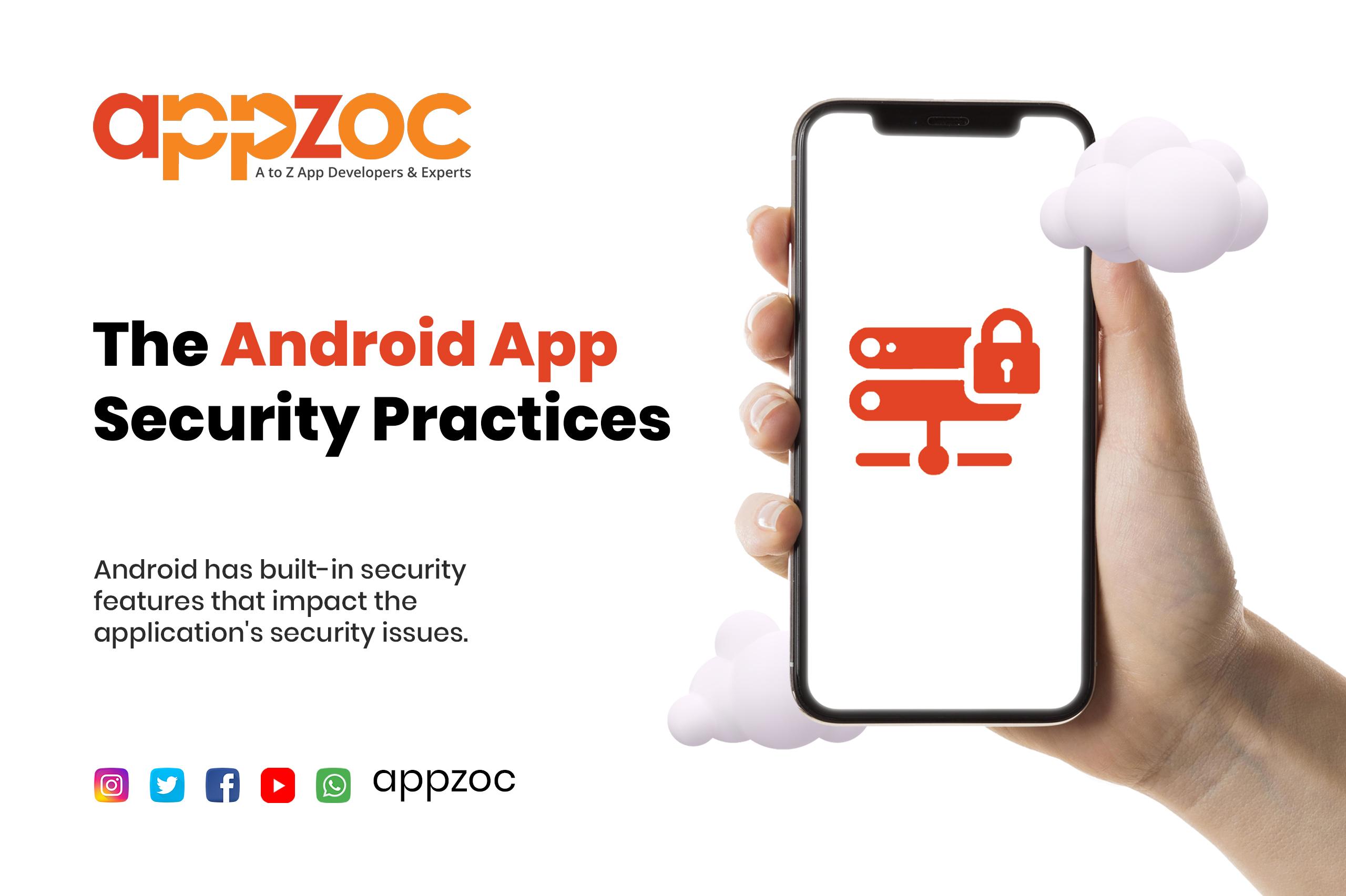
Flutter
Make the most of this cutting-edge technology by developing apps quickly! Our Flutter solutions have amazing features that can be used to create sleek, high-performance apps that can scale seamlessly across platforms.

The security of the apps preserves user trust and device integrity imparting a positive impact on your app’s security but the iOS app development companies in Kochi follow an entirely different process from that of Android.
Android has built-in security features that impact the application’s security issues. You can typically build your apps and avoid difficult decisions about security with the core security features. The Android Application isolates your app data and the application framework which does the security functionality. There are different technologies to mitigate risks associated and together an encrypted file system can be enabled to protect data. The user-granted permissions restrict access to system features and user data and also the application-defined permissions control application data.
Android applications are spanning across devices and the generic web-based applications, require a pen-test activity With the increased need for high-end smartphone applications. Relying on Android smartphones gets subjected to hacking and causes the loss of a significant amount of sensitive data.
Android security goes almost always for the wrong reason, the overly sensationalized accounts tied to theoretical threats with practically zero chance of actually affecting you in the real world. The vast majority of firms selling malware protection programs for Android phones have some pretty advanced methods of protection in place for Android and the biggest threat you should be thinking about is your own security that makes sure your setup is sound.
When you safeguard the data between your app and a website, it protects the data that you send and receive. Using implicit intents and non-exported content providers can show an app chooser that can launch at least two possible apps on a user’s device and this interaction strategy transfers sensitive information to an app that they trust. Also, apply for signature-based permissions that you control or own permissions and instead check that the apps accessing the data offer a more streamlined, secure user experience.
Unless you intend to send data, you should explicitly disallow other developers’ apps and this setting is particularly important if your app can be installed on devices remaining true by default on certain versions of Android. Ask for credentials to access sensitive information and ask for either a PIN/password/pattern or a biometric credential.
Applying network security measures can improve your app’s network security. Like using SSL traffic, the app communicates with a web server that has a certificate and by adding a network security configuration, you can declare your network’s security settings to create the configuration. The procedure for the same includes declaring the configuration in your app’s manifest and specifying that all traffic to particular domains should use HTTPS to explicitly allow user-installed certificates. During debugging and testing the app’s security configuration is defined in the XML file.
Your SSL checker shouldn’t accept every certificate and handle all SSL warnings you’re communicating by signing a new CA, and if that CA is not in the trusted form then you cannot use a network security configuration.
Using the web view objects carefully allows users to navigate to sites that are outside of their control and take care you should never enable JavaScript interface support unless you completely control and trust the content.
Use HTML message channels on devices running Android 6.0 for communicating between a website and your app.
The most common security concern is the data that you save on the device as on internal storage, external storage and content providers.
Using internal storage Android implements protection by avoiding the MODE_WORLD_WRITEABLE or MODE_WORLD_READABLE with the ability to limit data access to particular applications. Sharing your data with other app processes, offering read and write permissions to other apps and providing additional protection for sensitive data opt for encrypting local files using the Security library and file system encryption for lost devices.
Using external storage is globally readable and writable and also modified by any application, don’t store sensitive information using external storage. To read and write files on external storage in a more secure way,
you should Perform input validation for data from any untrusted source. You should not store executables or class files on external storage, on retrieving verify it cryptographically prior to dynamic loading.
Using content providers, offer a structured storage mechanism to allow access by other applications and providing access to your content providers allows other apps to access the stored data.
When creating a Content Provider specifies single permission for reading and writing and also you should limit your permissions later exposing new functionality. The sharing data between only your own apps is set to signature protection to provide a better user experience and let the apps access the data that are signed with the same key.
Content providers can also provide more granular access to FLAG_GRANT_READ_URI_PERMISSION and FLAG_GRANT_WRITE_URI_PERMISSION flags under the scope of these permissions to avoid potential SQL injection from untrusted sources. It is not sufficient to concatenate user data without having a false sense of security that makes it possible for some data to be confirmed using creative and the write permission may be equivalent to providing both reading and writing.
Various backend APIs have been designed to protect against unwanted assaults keeping the android security architecture measures in place. The authenticated APIs can vary for different mobile platforms.
The private user data unnecessarily raises your risk levels, utilize encrypted data containers or key chains to reduce your reliance on logs and automatically remove them after a predetermined period.
For different mobile operating systems, the product’s protection devices and restrictions distribute the program on your selected platforms with distinct encryption compatibility and data support for the OS.
To save money, overlooking app testing is not advisable and must be done to create a great app free of errors.
To test the app it is critical for the designers to understand how the app appears and performs on a real device.
To battle Android malware and viruses the Android app developers in Kerala, suggest a few antivirus businesses are recommended together with several mobile app security testing tools that can be used for testing the security of your android apps.